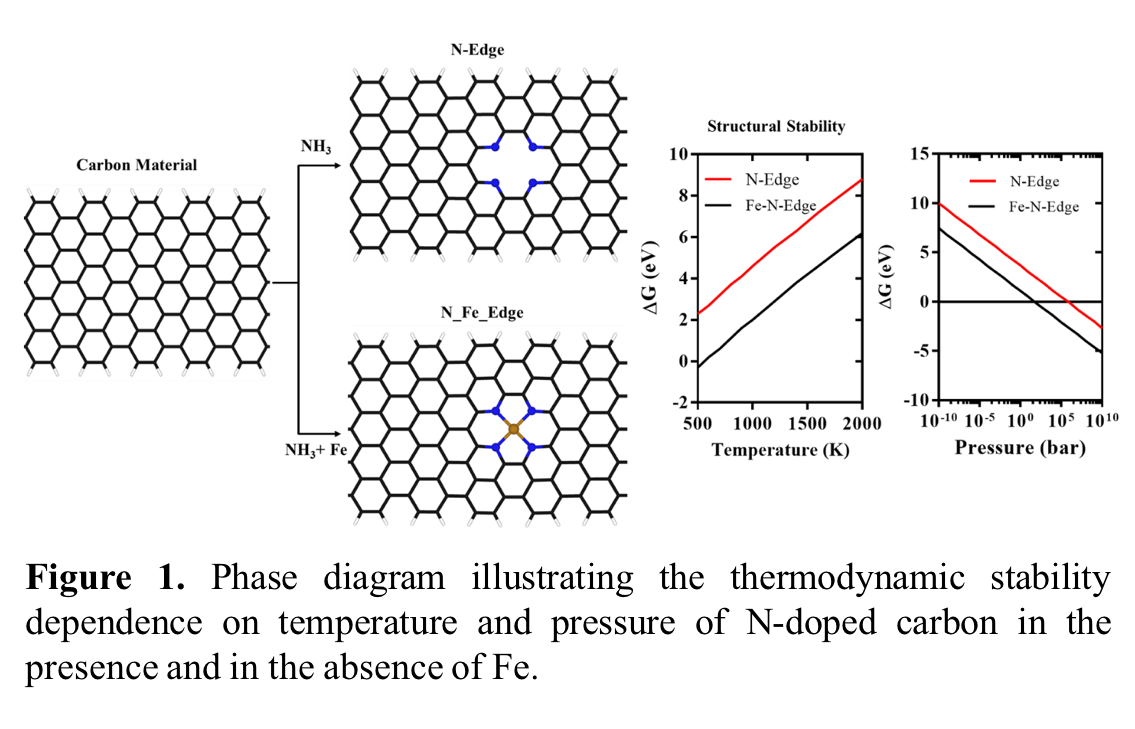(228c) Determining the Electronic Structure and the Thermodynamic Stability of Iron Complexes in Nitrogen-Doped Carbon: A Computational Study
AIChE Annual Meeting
2020
2020 Virtual AIChE Annual Meeting
Catalysis and Reaction Engineering Division
Catalysis on Low Dimensional Materials I: Carbides and Nitrides
Monday, November 16, 2020 - 8:15am to 8:30am
Carbonaceous materials, such as graphene and amorphous carbons, have garnered great interest in recent years as their chemical and electronic properties can be finely tuned through functionalization with heteroatomic dopants. In particular, nitrogen-doped variants have received interest for their potential as electrodes, adsorbents, and supports for metallic catalysts. While a wealth of experimental data exists on the classification and applications of these compounds, a complete thermodynamic picture of the functionalities that are likely to form under different experimental conditions is lacking. To address this, we provide atomistic insight into the most thermodynamically stable nitrogen and nitrogen-iron complexes on graphene-based materials through a unique combination of density functional theory and thermodynamic calculations. The resulting phase diagram shows a general preference for the formation of conjugated nitrogen edge groups such as pyridines and pyrroles, but such complexes are thermodynamically competitive to a graphitic functionality under certain circumstances. We further benchmark our results by comparing X-ray Photoelectron Spectroscopy (XPS) experiments to our DFT-based results by calculating the core level shifts for several reference model compounds (acridine, amino- anthracene, carbazole, and melamine). This benchmarking procedure allows us to deconvolute the XPS results of N-doped char so as to determine how the different structural configurations of C-C, C-N and C-O will change with production temperature.
In addition, these supports have a significant effect on the oxophilicity of iron. We find N-doped carbonaceousmaterials enable an effective control of the Fe oxidation state via an electronic interaction between Fe and N.This interaction leads to a weakened oxygen affinity of the Fe particles in the presence of N-doped sites, as unveiled by H2-temperature programmed reduction measurements with separate N2O and water vapor pretreatments. These results are further confirmed computationally (see Figure 1) through an electronic analysis of Fe-N complexes that are embedded into graphene.
